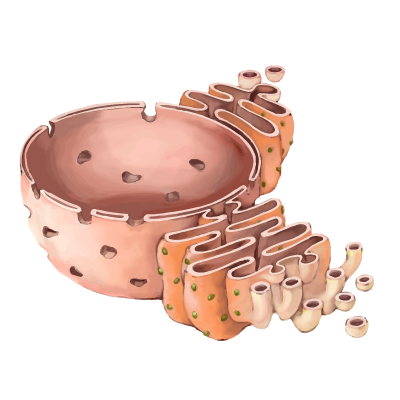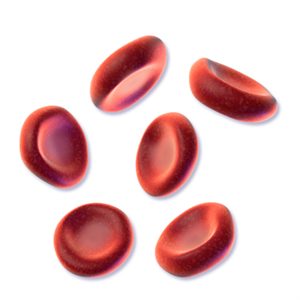PDF chapter test TRY NOW
Endoplasmic reticulum:
A continuous membrane system forms a series of flattened or tubular sacs in the cytoplasm of the eukaryotic cell.
They are two types:
Rough endoplasmic reticulum:
These are known as the rough endoplasmic reticulum due to the presence of ribosomes attached to their membrane. These ribosomes are structures that are involved in the synthesis of protein. Hence they are known as protein factories.
Smooth endoplasmic reticulum:
These are networks of tubular sacs that lack ribosomes on their membrane. They play a significant role in the synthesis of lipids, steroids, and transport within the cell.

Endoplasmic reticulum
Nucleus:
The dense, spherical body found at the centre of the cytoplasm of plant and animal cells is known as the nucleus. It is an important component of the living cell. The nucleus can be seen with the help of a microscope after staining it.
The nucleus is separated from the cell's cytoplasm by a double-layered membrane known as the nuclear membrane.
The nuclear membrane contains pores known as the nuclear pores and hence, allows the movement of substances between the cytoplasm and the inside of the nucleus. The inside of the nucleus is jelly-like and is known as the nucleoplasm.

Nucleus
When the nucleus is observed with a high magnification microscope, a small spherical structure known as the nucleolus is found. It is a structure that is involved in the synthesis of proteins.
The nucleus also contains specific thread-like structures known as the chromosomes that store genetic material in them. During cell division, this genetic material that stores the hereditary characters is transferred from generation to generation through the chromosomes.
Functions of the nucleus:
- It is a structure that controls all the various processes and chemical reactions of the cell. Hence it is known as the brain of the cell.
- It is responsible for the inheritance of characters from one generation to another.
Important!
The red blood cells are the only eukaryotic cells that lack a nucleus. Without a nucleus, these cells die fast. About two million red blood cells die every second. Hence the human body produces new red blood cells every day.

Red blood cells
Reference:
https://upload.wikimedia.org/wikipedia/commons/a/a6/201601_Endoplasmic_reticulum.png
https://upload.wikimedia.org/wikipedia/commons/5/5e/0318_Nucleus.jpg
https://upload.wikimedia.org/wikipedia/commons/thumb/3/39/Blausen_0761_RedBloodCells.png/512px-Blausen_0761_RedBloodCells.png
